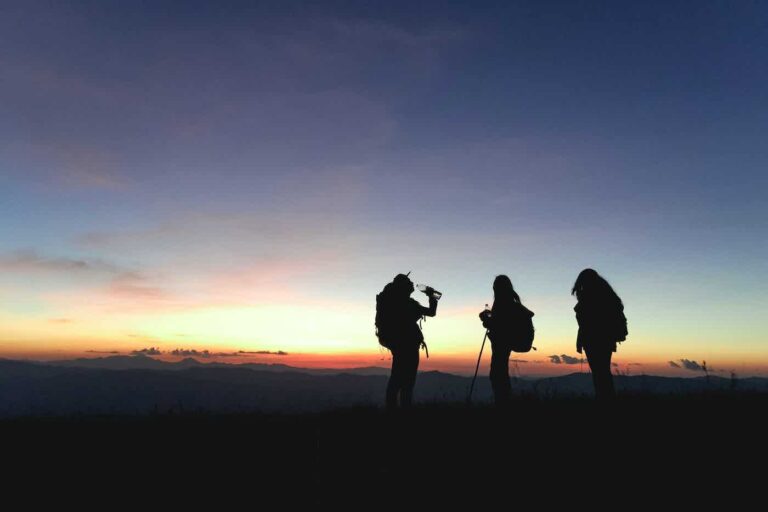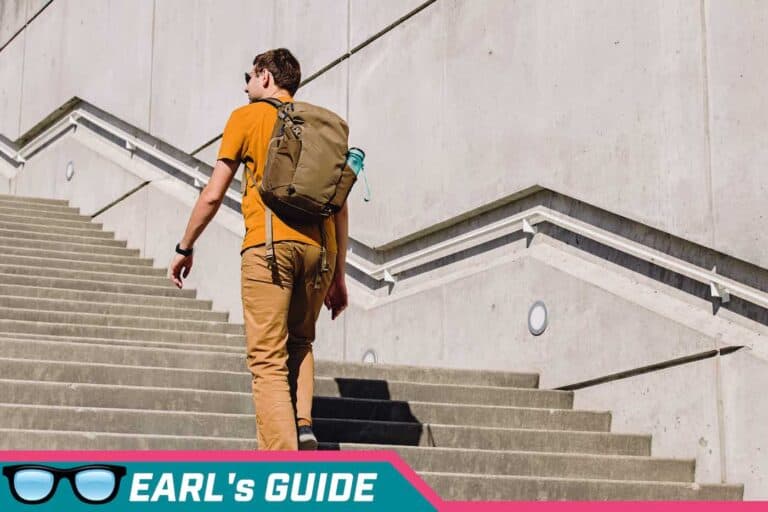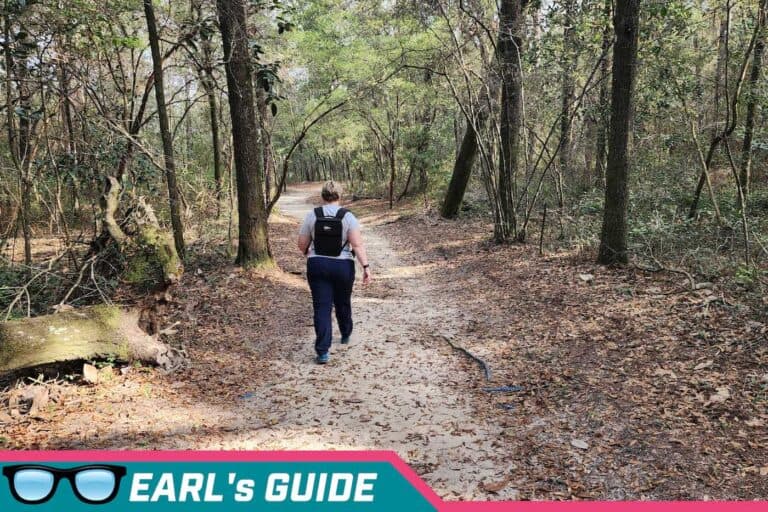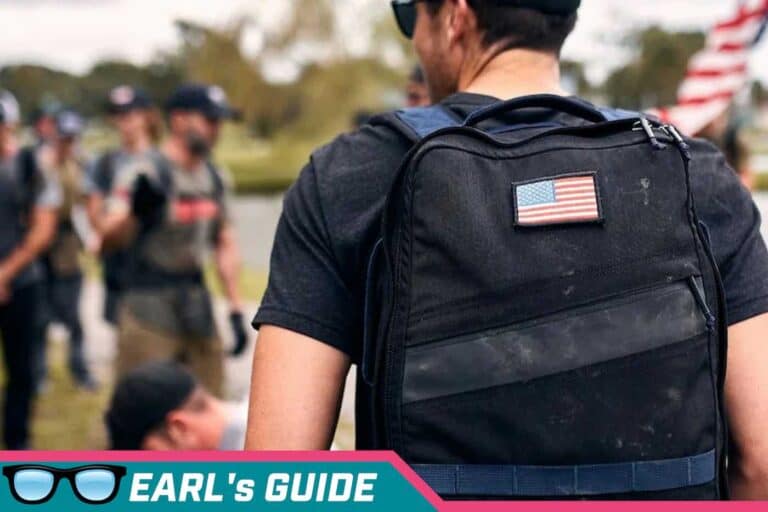In the tapestry of outdoor adventures, camping stands out as a thread that weaves through many of our happiest memories. Yet, like any adventure worth taking, it comes with its own set of risks. That’s why “Camping Safety Tips” is not just a topic—it’s our compass in the wilderness, guiding us through the beauty of the natural world with wisdom and caution. Today, I invite you on a journey through the essential practices that ensure our stories around the campfire remain filled with joy, not cautionary tales.
The Foundation of Camping Safety: Understanding the Essentials
At the heart of every safe camping trip is a foundation built on preparation and knowledge. Before embarking on your adventure, it’s crucial to familiarize yourself with the camping area. This includes understanding the local wildlife, weather patterns, and any potential hazards specific to the location. Knowing what to expect allows you to prepare adequately, ensuring that surprises along the way are pleasant, not perilous.
Here are 33 essential safety tips for RV campground owners, managers, and visitors to consider:
- Pre-Arrival Checks: Before guests arrive, ensure all RV sites are inspected for hazards like uneven ground, overhanging branches, or debris. This preemptive step can prevent accidents and ensure a smooth setup for your guests.
- Fire Safety Rules: Clearly communicate fire safety rules, including how and where to build a campfire, fire pit usage, and the importance of fully extinguishing fires. Provide fire extinguishers throughout the campground.
- Weather Preparedness: Offer resources and information on how to prepare for unexpected weather, including local storm shelters and emergency contacts. Consider a notification system for severe weather alerts.
- Wildlife Awareness: Educate guests on local wildlife, including any animals that could pose a threat. Provide tips on securing food, trash management, and what to do if they encounter wildlife.
- First Aid Stations: Equip your campground with accessible first aid stations, clearly marked and stocked with essentials. Offer basic first aid training to staff to assist in emergencies.
- Water Safety: If your campground is near water, post clear water safety signs about swimming, boating, and fishing. Consider offering life jackets for guests to borrow.
- Child Safety Areas: Designate safe play areas for children, away from vehicle traffic and other hazards. Implement a check-in/check-out system for child activities to keep track of young campers.
- Pet Policies: Enforce pet policies that ensure all pets are leashed and under control. Provide pet waste stations to maintain cleanliness and prevent health risks.
- Vehicle Speed Limits: Implement and enforce a low-speed limit within the campground to protect pedestrians, especially children at play.
- Secure Food Storage: Advise guests on secure food storage practices to prevent attracting wildlife. Offer bear-proof containers in areas known for bear activity.
- Chemical Safety: Provide guidelines for the proper storage and disposal of hazardous materials, such as propane and cleaning agents, to prevent accidents and environmental harm.
- Electrical Safety Inspections: Regularly inspect electrical hookups and ensure they meet safety standards. Provide guidelines on safe electricity use to prevent overloads and fires.
- Pathway Lighting: Maintain well-lit pathways throughout the campground to prevent trips and falls after dark. Solar-powered lights are an environmentally friendly option.
- Emergency Evacuation Plans: Develop and communicate clear emergency evacuation plans. Include maps and instructions in your welcome materials.
- Swimming Pool Rules: If your campground has a pool, post clear safety rules, require adult supervision for children, and maintain regular pool inspections.
- Carbon Monoxide Awareness: Educate guests on the dangers of carbon monoxide, especially the importance of not using generators or grills inside an RV.
- Sanitation Stations: Provide and maintain sanitation stations for RV waste disposal to prevent health risks and environmental contamination.
- Safe Grilling Practices: Offer designated grilling areas and share safe grilling practices to prevent fires and injuries.
- RV Stability: Provide guidance on properly stabilizing RVs upon arrival, including the use of wheel chocks and stabilizing jacks to prevent accidents.
- Trip and Fall Prevention: Maintain all walking surfaces to prevent trips and falls. This includes repairing potholes, ensuring level walking paths, and marking any steps or uneven areas.
- Secure Valuables: Encourage guests to secure valuables, offering lockable storage options or safes in high-risk areas.
- Quiet Hours: Enforce quiet hours to ensure all guests can enjoy a peaceful environment, reducing the risk of late-night disturbances that can lead to accidents.
- Alcohol Policies: Clearly state and enforce alcohol policies to maintain a safe and family-friendly environment.
- Insect and Pest Control: Provide information on protecting against ticks, mosquitoes, and other pests, including the availability of bug spray and citronella candles.
- Poisonous Plant Identification: Educate guests on identifying and avoiding contact with poisonous plants native to the area.
- Recreational Equipment Safety: Ensure all recreational equipment, like bikes or kayaks, is in good condition and provide safety gear, such as helmets and life jackets.
- Safe RV Cooking: Share tips on safe RV cooking practices to prevent fires and carbon monoxide poisoning, including the use of vent fans and never leaving cooking appliances unattended.
- Lightning Safety: Offer guidance on what to do in case of lightning, especially for guests caught outside during a storm.
- Storage Shed Security: Secure all storage sheds or maintenance buildings to prevent unauthorized access to potentially dangerous tools or chemicals.
- Personal Safety Workshops: Consider offering workshops or informational sessions on personal safety, including how to use safety equipment and emergency preparedness.
- Surveillance Cameras: Install surveillance cameras in common areas to enhance security and deter potential criminal activity.
- Communication Tools: Provide guests with tools or systems to communicate with campground staff in case of emergencies, such as walkie-talkies or a dedicated phone line.
- Staff Training: Regularly train staff on emergency response procedures, including first aid, fire response, and how to assist guests in various emergency situations.
By implementing these safety tips, RV campground operators can create a secure environment that allows guests to relax and enjoy their stay with peace of mind.
How to Equip Yourself for Safety
Equipping yourself for safety goes beyond packing a first aid kit—though that’s non-negotiable. It’s about carrying the right tools and knowledge to navigate the challenges you might face. This includes:
- A comprehensive first aid kit tailored to your group’s specific needs.
- Reliable communication devices, such as fully charged cell phones and perhaps a satellite phone or a two-way radio for areas with poor cell service.
- Navigation tools like maps, a compass, or a GPS device, ensuring you can always find your way.
- Bear-proof containers and knowledge of proper food storage to prevent wildlife encounters.
- Adequate clothing and shelter to protect against the elements, regardless of the forecast.
Where Safety Meets Nature: Setting Up Camp
Choosing the right spot to set up camp is as much about comfort as it is about safety. Look for level ground to avoid flooding in case of rain. Stay clear of isolated trees or tall structures that could attract lightning during a storm. Consider proximity to water sources, both for convenience and to avoid potential hazards like flash floods. Remember, your campsite is your home in the wilderness—choose a location that offers both protection and peace.
Why Safety Cannot Be Overlooked: A Cautionary Tale
Let me share the story of a family, the Harrisons, who embarked on a weekend camping trip with enthusiasm but insufficient preparation. They chose a secluded spot near a river, unaware of the region’s propensity for sudden storms. One night, a flash flood turned their idyllic campsite into a dangerous trap. Thankfully, they were rescued by park rangers, but the experience left them shaken and with a newfound respect for the power of nature. This story underscores the importance of preparation and the respect we must accord to the natural world. It’s a reminder that safety is not just a guideline but a guardian of our well-being.
Frequently Asked Questions (FAQ) on Camping Safety
Q: How can I stay safe while hiking during my camping trip? A: Hiking safety starts with planning. Always inform someone of your route and expected return time. Stick to marked trails, carry sufficient water, and pack a map and compass or GPS device. Be mindful of the weather and wildlife, and never underestimate the terrain—what looks easy on a map can be challenging in reality.
What are some of the do’s and don’ts in camping?
Camping, a timeless activity that reconnects us with nature, offers an escape from the bustling rhythm of daily life. It’s an opportunity to forge deeper connections with the environment, our loved ones, and ourselves. However, to ensure this experience remains pristine for everyone, there are certain unwritten codes—do’s and don’ts—that every camper should adhere to. These guidelines not only ensure our safety and enjoyment but also protect the natural beauty that draws us into the wild.
The Do’s of Camping: Embracing the Wilderness with Respect
Do Plan Ahead and Prepare: Preparation is the cornerstone of a successful camping trip. This involves researching your destination, understanding the weather conditions, and being aware of any potential hazards. A well-prepared camper is not only a safe camper but also one who can fully immerse themselves in the experience, knowing they are ready for whatever the wilderness throws their way.
Do Respect the Wildlife: Nature is not a zoo, and its inhabitants are not there for our entertainment. Respecting wildlife means observing from a distance, not feeding animals, and securing your food to not attract unwanted visitors. This respectful distance ensures both your safety and the well-being of the creatures that call these spaces home.
Do Leave No Trace: The principle of leaving no trace is paramount in camping. It’s about ensuring that when you leave, the only thing left behind are footprints—barely visible ones at that. This involves packing out all your trash, using established fire rings, and not altering the site more than necessary. By adhering to these principles, you contribute to preserving the natural beauty of the site for future visitors.
Do Be Considerate of Other Campers: The wilderness is a sanctuary for all who venture into it. Being considerate means keeping noise levels down, respecting others’ space, and following campground rules. It’s about creating an environment where everyone can find their piece of tranquility.
The Don’ts of Camping: Avoiding Common Pitfalls
Don’t Ignore Campsite Rules: Every campsite comes with its own set of rules, designed not just for the welfare of its guests but also for the preservation of the area. Ignoring these rules can lead to dangerous situations, from uncontrolled fires to problematic wildlife encounters. Adhering to campsite rules ensures that the delicate balance between nature and human enjoyment remains undisturbed.
Don’t Take Shortcuts on Trails: Straying from marked trails might seem like an adventure, but it can lead to soil erosion, plant damage, and getting lost. The trails are there to guide you safely through the wilderness while protecting the ecosystem around them. By staying on the path, you ensure that the natural habitat remains intact for the flora and fauna that thrive there.
Don’t Leave Fires Unattended: A campfire embodies the essence of camping, providing warmth, light, and a focal point for storytelling. However, an unattended fire can quickly turn into a devastating wildfire. Always extinguish your fire completely before leaving the site or going to sleep, ensuring that you leave no risk behind.
Don’t Forget to Check Weather Forecasts: The whims of nature can change rapidly, turning a sunny day into a challenging storm. Failing to check the weather forecasts can leave you unprepared for what’s to come. By staying informed, you can plan appropriately, ensuring your safety and comfort no matter what the skies have in store.
A Tale of Respect and Responsibility
Let’s delve into the story of Alex and Jordan, two avid campers who set out for a weekend in the wilderness. They chose a secluded spot known for its breathtaking views and pristine environment. Armed with the knowledge of do’s and don’ts, they embarked on their journey with respect and responsibility at the forefront of their minds.
They planned meticulously, ensuring they were prepared for the region’s variable weather and terrain. Upon arrival, they made a point to minimize their impact, setting up camp on durable surfaces and keeping their site tidy. Their interactions with wildlife were from a respectful distance, marveling at nature’s beauty without intruding on it.
However, not far from them, another group seemed unaware or indifferent to these unspoken rules. Loud music echoed through the valley, and the remnants of their visit were left scattered around their site, a stark contrast to the ethos Alex and Jordan lived by.
The difference in experiences was night and day. Alex and Jordan left the site with their spirits uplifted, knowing they had immersed themselves in nature without leaving a scar. The other group, however, missed the essence of camping—respect for nature and fellow campers. Their negligence not only marred their experience but also impacted those around them and the environment itself.
The Moral of the Story
This narrative serves as a poignant reminder of the impact our actions have when we step into the wilderness. The do’s and don’ts of camping are not just guidelines but a creed to live by when we choose to venture into nature’s embrace. They ensure that our adventures in the great outdoors are filled with joy, not regret, and that the sanctity of these natural spaces is preserved for generations to come.
Camping is a privilege that carries with it the responsibility of stewardship. By adhering to these essential do’s and don’ts, we not only enhance our own experience but also ensure that the wild’s call remains as inviting and majestic as ever. So, as we pack our bags and set out on our next adventure, let us do so with a commitment to respect, prepare, and preserve—principles that make camping a truly enriching experience.
How to camp in a tent safely?
Tent camping is an art form, a delicate dance with nature that, when done correctly, yields experiences rich in tranquility, adventure, and personal growth. To camp in a tent safely is to engage with the wilderness on its terms, respecting its rules and rhythms. It’s about preparation, awareness, and a deep-seated respect for the environment. This narrative explores the intricacies of tent camping safety, guiding would-be adventurers through the essential steps to ensure their foray into the wild is both enjoyable and secure.
The Prelude: Preparation and Planning
Before the journey begins, before the tent stakes are driven into the soft earth, the cornerstone of a safe camping experience is laid in the planning stage. This preparation involves researching your chosen campsite, understanding the potential hazards—from wildlife to weather patterns—and equipping yourself with the knowledge to mitigate them.
Selecting the right tent is your first line of defense against the elements. It should be suited to the conditions: waterproof for rainy climates, breathable for warmer locales, and fortified for areas where winds can howl with a winter’s fury. Equally important is a comprehensive first aid kit, tailored not just to the minor cuts and bruises of outdoor life but equipped for the specific challenges of the wilderness you’re entering.
Setting the Stage: Choosing Your Campsite
Upon arrival, the choice of where to pitch your tent is a decision that holds weight. Look for high ground to avoid the risk of flooding, yet not so isolated to be exposed to wind’s whims. Natural shelters like a copse of trees can offer protection, but beware of dead branches above, which can turn perilous in a storm—a phenomenon known as “widow-makers.”
Clear the site of debris, rocks, and twigs, creating a smooth canvas for your tent. This not only ensures comfort but also protects the tent’s base from punctures, preserving its ability to shield you from the elements. Orient the tent’s entrance away from prevailing winds, and consider the sun’s path: a morning sun can warm and wake you gently, a boon in cooler climates.
The Dance with Fire: Cooking and Warmth
Campfires, the heart of many camping experiences, demand a respectful and cautious approach. Use established fire rings where available, keeping the fire small and manageable. Never leave it unattended, and ensure it’s completely extinguished before you retire or leave the site. Cooking should be done safely away from the tent to prevent accidents and avoid attracting wildlife with the scent of food.
Coexisting with Nature: Wildlife Encounters
In the wild, we are guests in the homes of countless creatures. Store food securely, using bear-proof containers or hanging food out of reach, to avoid unwanted visitors. Be aware of the wildlife native to your camping area and educate yourself on how to respond to encounters. Respect their space, and they will respect yours.
The Unseen Shield: Environmental Protection
Your tent offers protection against the elements, but additional measures can fortify this shield. A tarp beneath the tent can prevent moisture from seeping in, while another above, properly secured, can add an extra layer of defense against rain. Within, keep your sleeping area clear of food and scented products that might attract animals.
Navigating the Night: Safety After Dark
As daylight fades, the world transforms, and what was familiar by day can become a maze by night. A reliable flashlight or headlamp is indispensable, ensuring safe navigation around the campsite. Mark paths with solar-powered lights or reflective markers to guide the way to communal areas or facilities.
In Case of Emergency: Being Prepared
Despite all preparations, the wilderness can be unpredictable. A whistle, a mirror, or a brightly colored cloth can be used to signal for help. Familiarize yourself with the area’s emergency procedures and have a plan for how to get help if needed. Communication devices, whether a cell phone with coverage or a satellite messenger, can be a lifeline in emergencies.
Leaving No Trace: The Ethical Exit
As you pack to leave, ensure that your campsite looks as though you were never there. This ethic of leaving no trace is perhaps the most profound safety tip, for it protects the wilderness for future campers and maintains the integrity of the natural habitat. Pack out what you brought in, dismantle all structures, and smooth over the ground where your tent once stood.
The Enduring Legacy: A Safe Return
Tent camping, when approached with respect, preparation, and a mindful adherence to safety, can be an immensely rewarding experience. It teaches self-reliance, fosters a deeper connection with nature, and offers a refuge from the fast pace of modern life. The true measure of a successful camping trip is not just in the moments of awe and peace it provides but in the safe return, ready to venture forth once more.
In this narrative of tent camping safety, every step, from planning to departure, is a stitch in the fabric of a broader relationship with the natural world. It’s a journey of respect—respect for the environment, for the creatures that inhabit it, and for our place within it. By embracing these principles, we ensure that the great tapestry of the outdoors remains unspoiled, inviting us back time and again to explore, learn, and grow.
What’s Your Take?
Now, I turn to you,. What are your go-to camping safety tips? Have you ever faced a situation where being prepared made all the difference? Share your stories and insights in the comments below. Let’s create a community where the wisdom of the experienced can guide the enthusiasm of the adventurous.
Camping offers us a unique opportunity to connect with the natural world, to find peace away from the hustle of everyday life. However, it demands of us a responsibility—to ourselves, our loved ones, and the environment we cherish. By adhering to these camping safety tips, we ensure that our adventures in the great outdoors are not just memorable but also safe. So, as you pack your bags and set your sights on the horizon, remember that safety is the companion that allows the spirit of adventure to soar freely. Stay safe, stay informed, and let the beauty of nature inspire your journey.

Robert Earl
Robert EarlRobert has 20+ years of experience as a Real Estate Agent, Coach & Digital Marketer. Robert Earl is passionate about teaching and empowering others to pursue their dreams and create sustainable income. Whether through a career in real estate, affiliate marketing, niche blogging, or transforming campgrounds into thriving communities, his proven strategies and techniques have helped numerous individuals and businesses succeed. Based on his years of experience and knowledge in the online marketing industry, along with his hands-on management in the Real Estate & RV Park sector, he has crafted a unique and effective approach to personal and professional growth. In addition to his business pursuits, Robert is also a CrossFit Online Level 1 Trainer (CF-OL1) and enjoys fitness activities, including Rucking workouts while traveling the country. His multifaceted career showcases his dedication to growth, innovation, and the pursuit of excellence in various domains.






